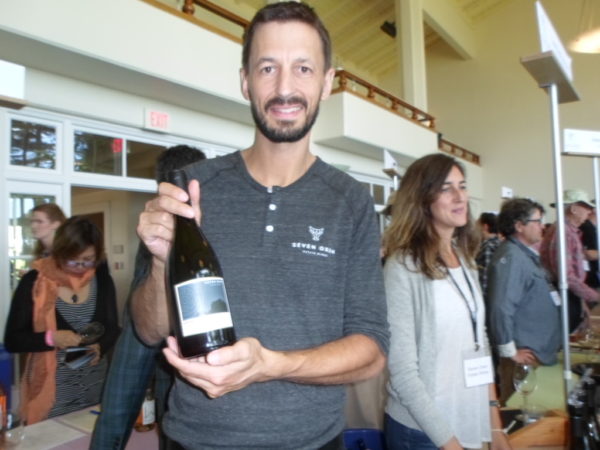 Among the offerings at a recent Rhone tasting in SF, I found several bottles to share with readers, and I want to start with a red that’s geared to summer and that can be sipped alone or put beside food. This marvel of versatility and panache is the 2013 Seven Oxen Grenache from Paso Robles.
Among the offerings at a recent Rhone tasting in SF, I found several bottles to share with readers, and I want to start with a red that’s geared to summer and that can be sipped alone or put beside food. This marvel of versatility and panache is the 2013 Seven Oxen Grenache from Paso Robles.
Cherries and black currants are grenache’s prevailing berry flavors but cherry can easily devolve into a jammy, cola-like viscosity which makes the wine too syrupy; no amount of acidic counter-push can rescue this. So that is the challenge with grenache: preserve the distinctive, sweet fruit while harnessing it with just the right amount of acidity to keep the cherries on their toes. The best grenache is lusty yet polished, an oxymoron perhaps, but that’s what gives grenache its unique sparkle.
Full disclosure: grenache, or Grenache, if you prefer—the rules over when to capitalize a varietal are still fluid—is one of my personal favorites, both in its white and red iterations. But finding a red grenache whose fruit forwardness is balanced by soft minerality without even a trace of harsh acidity…well, that’s worth sharing.
Imagine my surprise on learning that this was winemaker Bastien Leduc’s first Grenache vintage at Seven Oxen, where he is both winemaker and vineyard manager. And his origins in southwestern France clearly give him the knowledge and fingerspitzengefühl—the ability of sensing with one’s fingertips—to bring his estate grapes to wine perfection.
Of course the intense daytime heat in Paso Robles—on the date of this writing it is 108 down there—promotes flavor concentration with a higher Brix. And because grenache is so easily the victim of oxidation, the giant oak vats known as foudres, commonly used in the southern Rhone for fermentation, are usually replaced there with cement tanks. I was surprised to learn that this grenache was vinified in plastic!
While the stems are sometimes kept on during grenache fermentation to aerate the must, here, “the grapes are all destemmed, sorted, and slightly crushed before going into a one ton fermenter made of plastic,” says Bastien. “I find the one ton fermenter to be a very good volume, as it never gets too hot or requires cooling. Plus, it’s very easy to work with, for punch-downs especially.”
As soon as that is over, the wine is pressed and goes into one year old barrels of French oak, where it goes through malo-lactic and aging. And emerges as one beautiful, balanced bottle!
